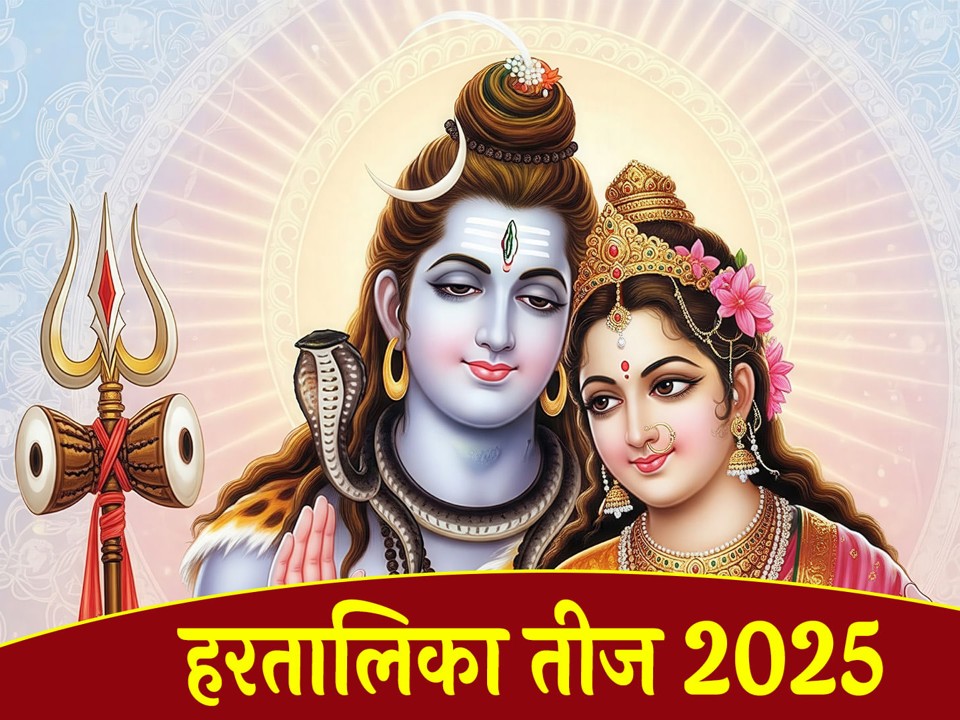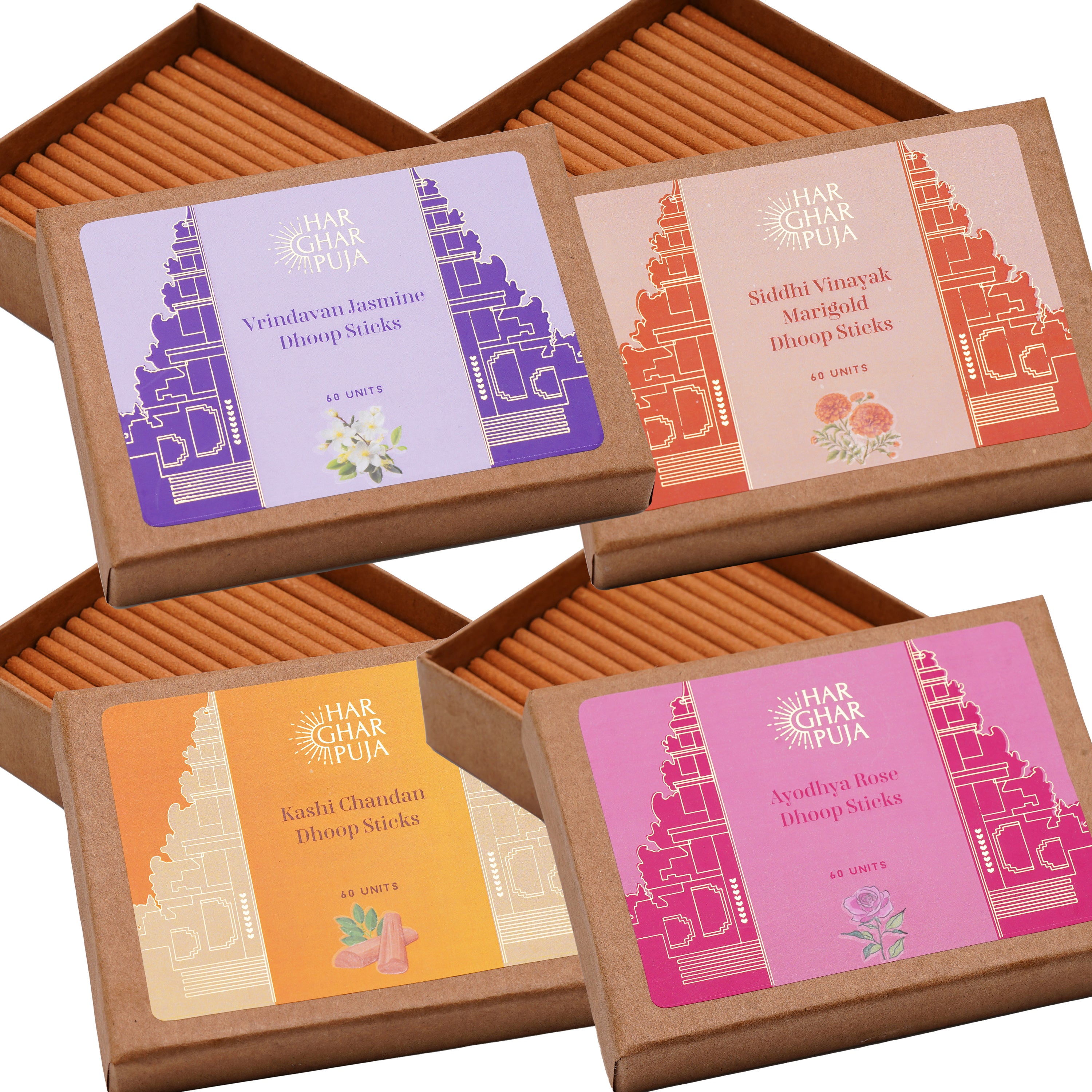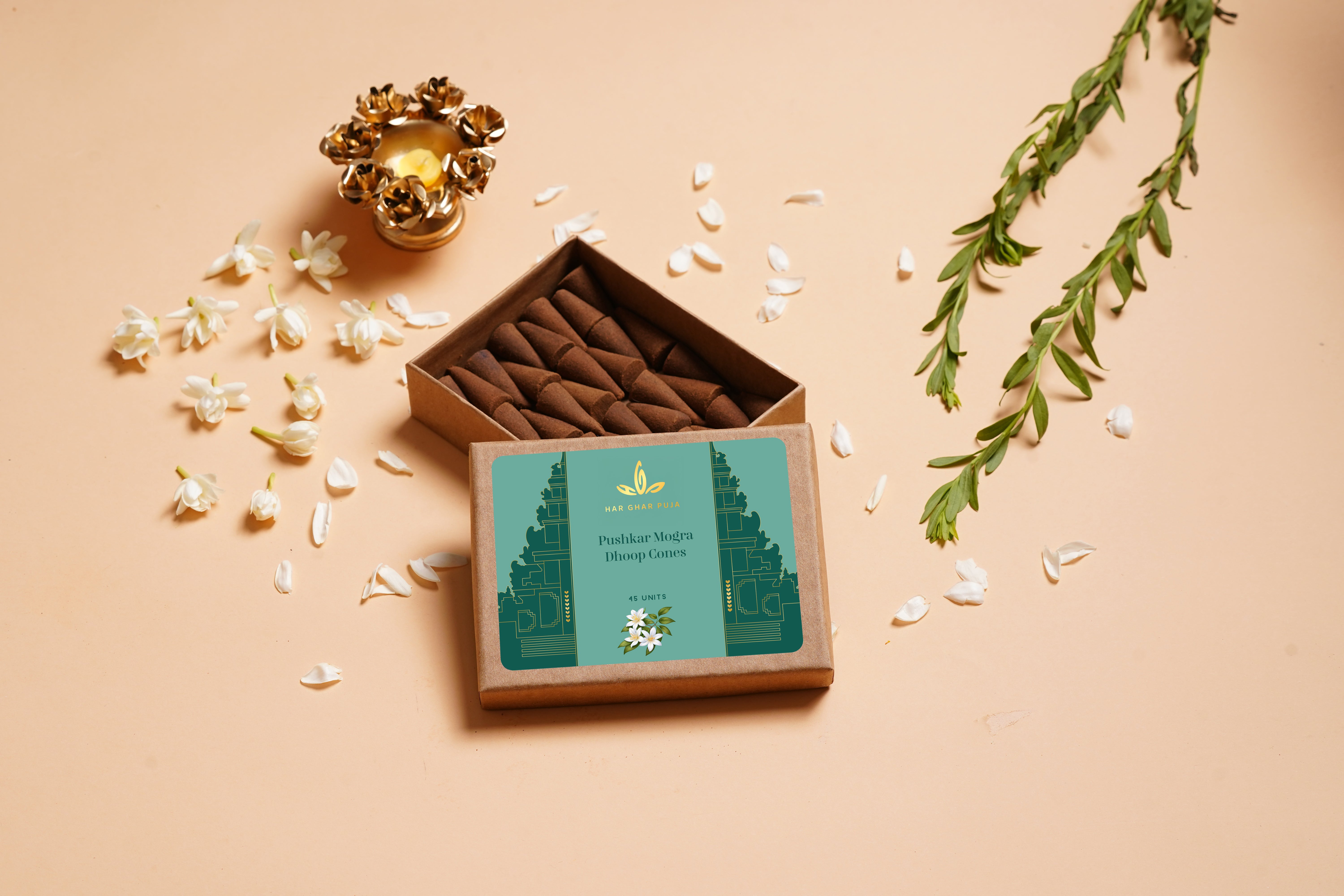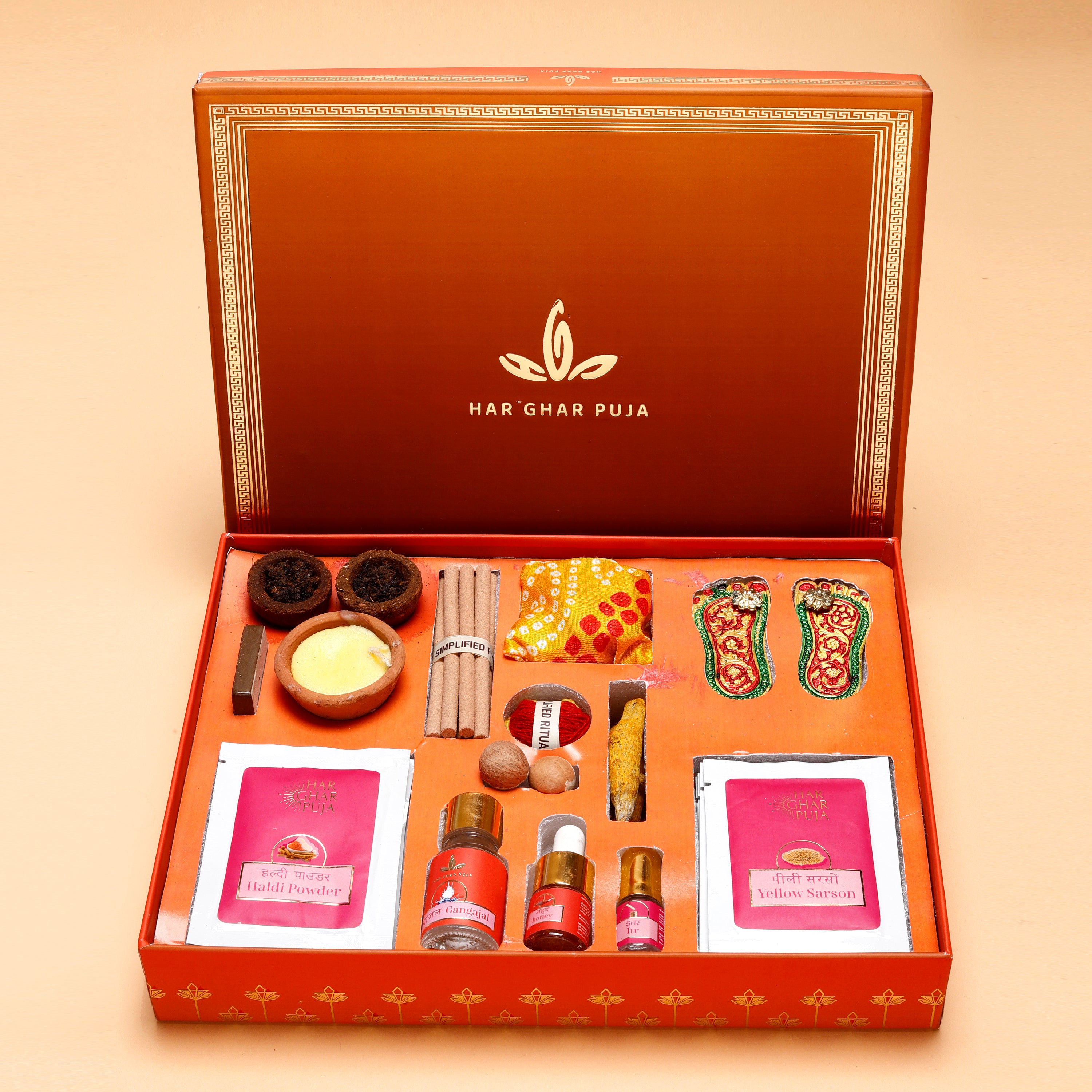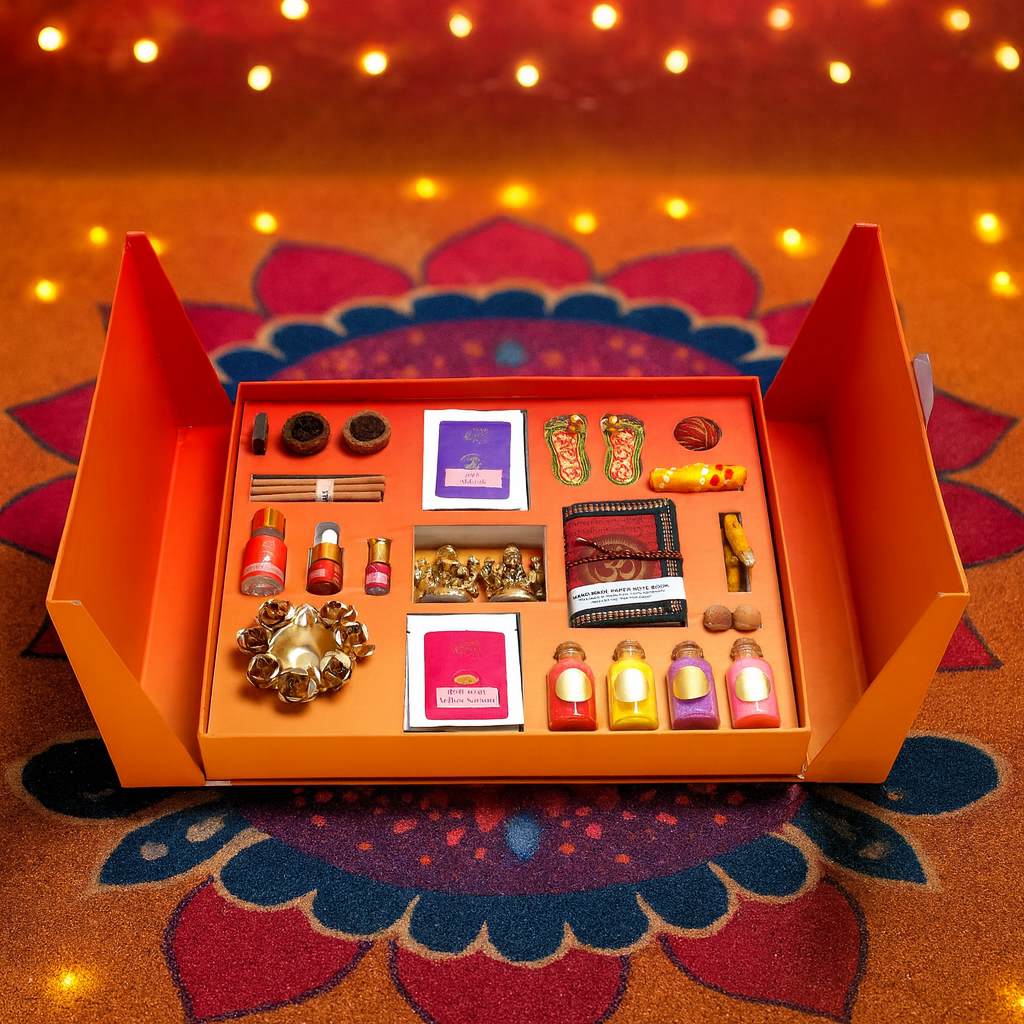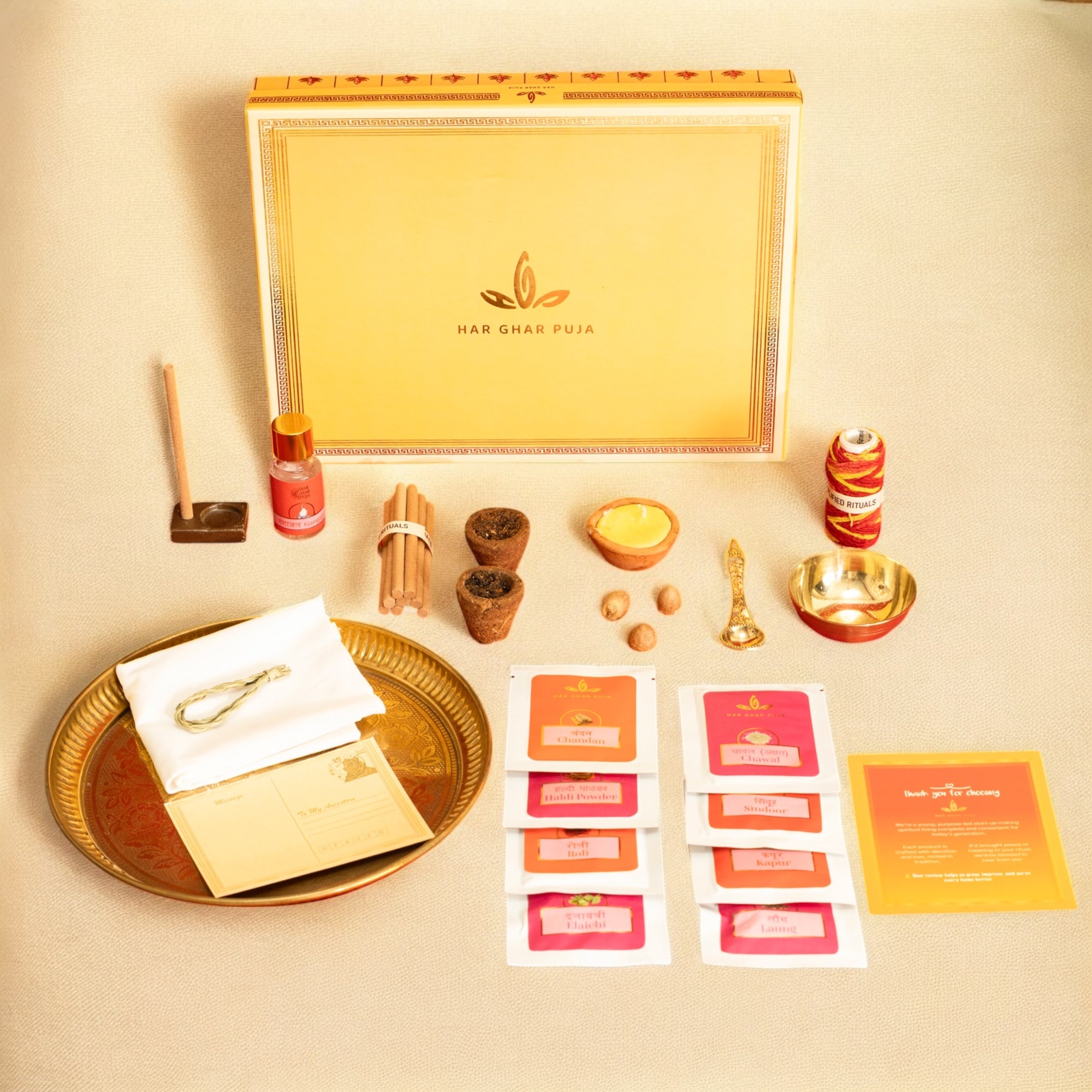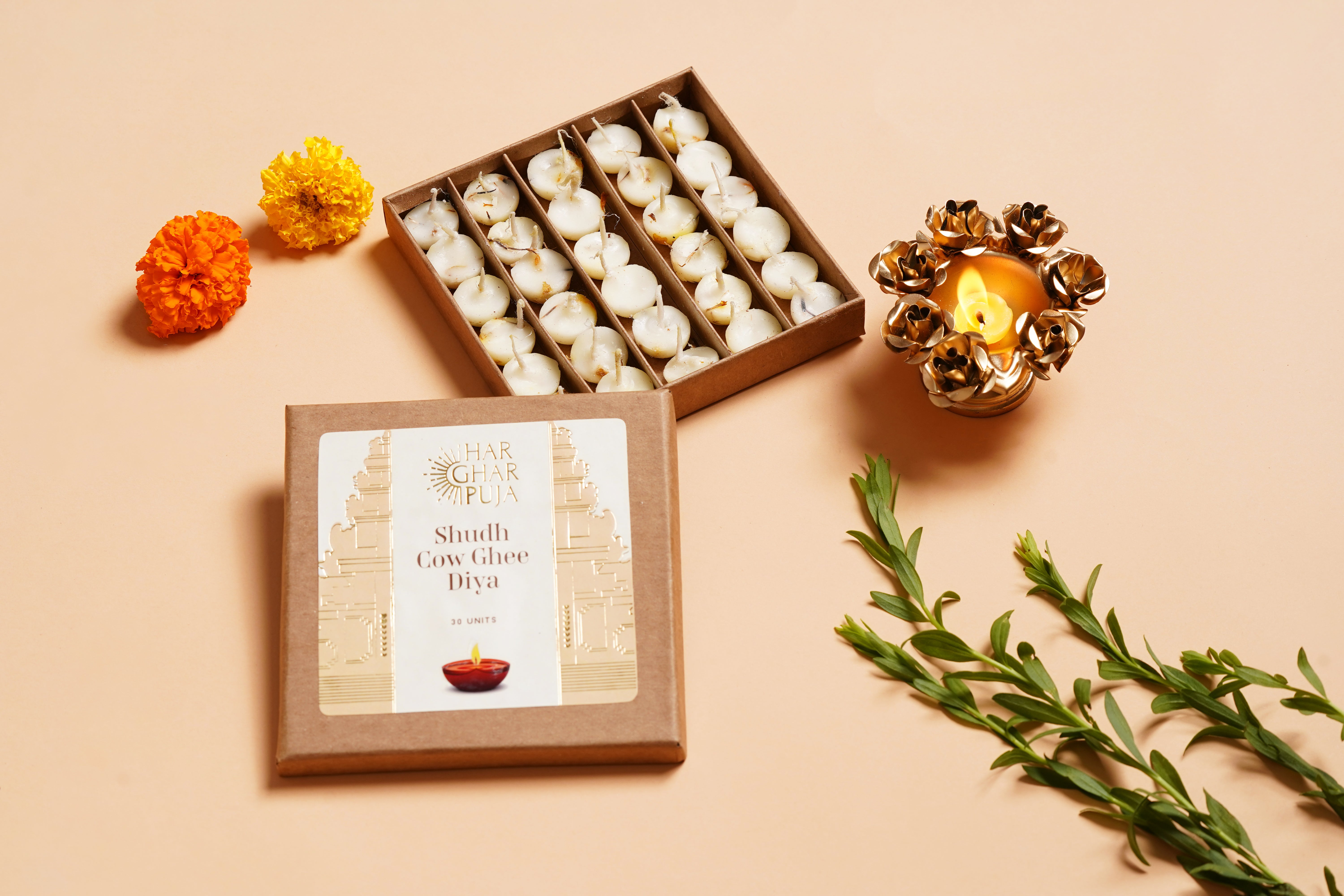Why is Karwa Chauth Celebrated?
Karwa Chauth is celebrated by married women for the long life, health, and prosperity of their husbands. Women observe a day-long nirjala vrat (without food and water) and break their fast after sighting the moon. The festival symbolizes love, devotion, and the sacred bond of marriage.
Which deity is worshipped in Karwa Chauth?
On Karwa Chauth, women primarily worship Goddess Parvati along with Shiva ji, Ganesha ji, and Kartikeya ji. The Karwa (earthen pot) is also worshipped as a symbol of prosperity and longevity.
There are 5 stages of the puja.
Stage 1: Setting up the Puja Space
This stage prepares the sacred environment for the rituals.
- Clean Yourself and the Space: Begin by taking a bath and wearing clean, traditional clothes. Sprinkle Ganga Jal around the puja area to purify the space and invite divine energy. Sit facing the east or north direction.
- Set up the Asan and Idols: Spread a red cloth on a table or base, decorate with flower petals and akshat, and place a the idol or photo of Maa Parvati. You may also keep an idol of Shri Ganesh Ji or Shiv Parivaar, as every puja begins with Ganesh Puja.
- Kalash and Deepak Sthapana: On a clean spot, sprinkle akshat (rice) and flowers. Place a kalash filled with water, tie mauli around its neck, and add a coin, laung, elaichi, supari, and flowers. Cover with mango leaves. Do a roli and chandan tilak on the kalash. Place a ghee diya and light it along with a dhoop stick to create a sacred ambiance.
- Setup the Karwa: Sprinkle wheat grains (gehu) and place an earthen pot (Karwa) on it. Tie a mauli around its neck and apply roli and chandan tilak. Keep a puja thali nearby with sindoor daan, chunni, and shringar samagri. If you are performing the puja alone, place another small Karwa near the idol of maa Parvati to use for rotating the thali during the katha.
Stage 2: Preparations Before the Katha
This stage focuses on invoking divine blessings and symbolic offerings.
- Aawahan of Ganpati: Begin by invoking Lord Ganesh with the mantra “Om Gan Ganapataye Namah.” Offer a tilak, mauli (symbolic clothes), and light a diya and dhoop stick.
- Abhishekam, Tilak, and Offerings: Sprinkle a few drops of Ganga Jal (or clean water) on the idols. Offer a small piece of mauli to the deities, apply roli and akshat, and present flowers, fruits, and prasad (ideally Gehu or saltless matri or sweets).
Stage 3: Karwa Chauth Vrat Katha
This stage strengthens the vrat through devotion and storytelling.
- Offer Shringar to Maa Parvati: Offer shringar items like bangles, sindoor, mehendi, toe ring or bindi one by one to Maa Parvati. Apply sindoor from your sindoor daan to Maa Parvati with devotion.
- Vrat Katha and Karwa Ferna: Take a few wheat grains in your hand and begin reading or listening to the Karwa Chauth Vrat Katha. During the katha, women rotate their thalis (Karwa Ferna) around Maa Parvati or with each other, typically seven times, chanting: “Parvati Mata, suhaag de.” If performing alone, rotate your thali with the symbolic Karwa set aside earlier.
Stage 4: Aarti and Havan
This stage invokes divine blessings and purifies the atmosphere.
- Aarti: Prepare an aarti thali by sprinkling akshat and making a swastik with roli. Place a ghee diya with kapur, light it, and recite the Shiv-Parvati aarti while moving the thali clockwise. You may also light a havan cup during this stage.
Stage 5: Completion of Puja and Chand Arag
This stage concludes the vrat with blessings and moon worship.
- Seek Forgiveness and Blessings: Join your hands, pray for your family’s well-being, and humbly seek forgiveness for any mistakes made during the puja.
- Take Aashirwad and Sindoor from Maa Parvati: Touch your aanchal or chunni to the sindoor applied to Maa Parvati in Stage 3, and place it on your forehead.
- Chand Arag (Offering to the Moon): Once the moon is visible, fill your Karwa with water and offer arag to the moon while holding your chunni or sieve. Look at the moon through the sieve, then view your husband’s face through it. Your husband then offers you water and sweets to break your fast.
- Dismantle the Setup: The next morning, take a bath, light a dhoop stick, and offer a short prayer. Dismantle the puja setup and distribute the prasad among family members.
✨ Karwa Chauth Puja is not just a ritual but a celebration of devotion, love, and the sacred bond of marriage.

